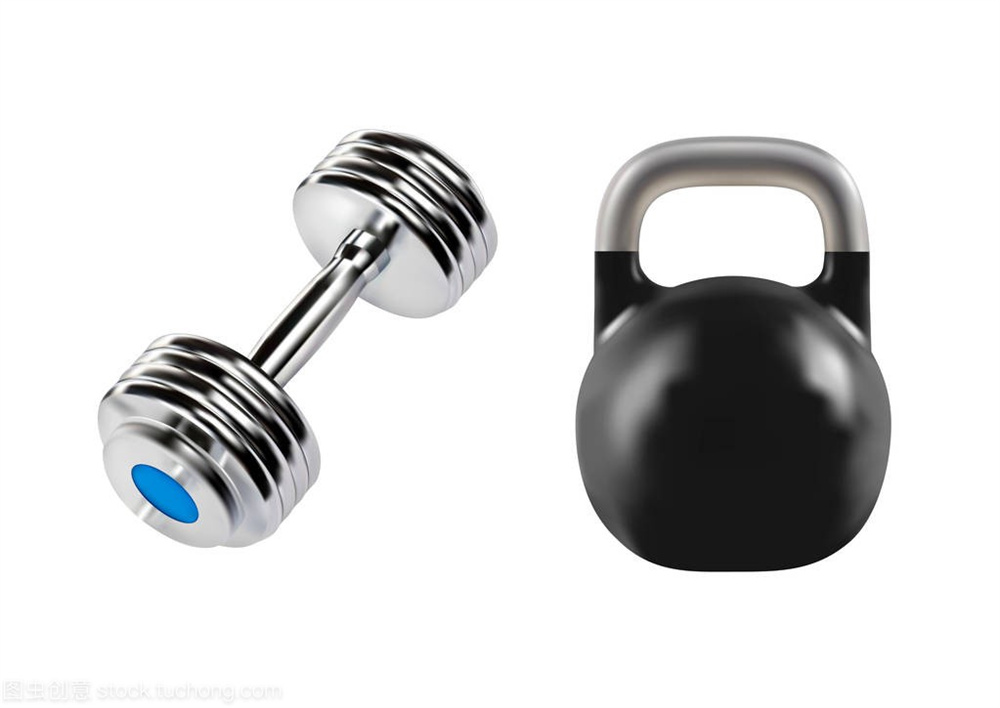
Privacy statement: Your privacy is very important to Us. Our company promises not to disclose your personal information to any external company with out your explicit permission.

When you're ready to tear through a round of heavy goblet squats or single-arm chest presses in a crowded gym, you might pick up the first weight you can get your sweaty hands on - no matter if it's a kettlebell or a dumbbell. And if you're getting fit from home, you might simply be stuck using one type of weight during every single workout.
The Differences Between Kettlebells vs. Dumbbells
Kettlebell vs. Dumbbell: Weight Distribution
Thanks to their distinct shapes, kettlebells and dumbbells have different weight distributions.A kettlebell has a bell-like shape, featuring a ball flattened on one end and a curved handle on the other, so its weight is distributed right underneath the handle. A dumbbell, on the other hand, consists of a straight handle with two equally sized weights on each end, so the weight is evenly distributed.In turn, a kettlebell inherently provides less stability than a dumbbell, therefore it asks more from your body to keep steady.
Kettlebell vs. Dumbbell: Handle Shapes and Range of Motion
Another key kettlebell vs. dumbbell distinction is their handles - the shape and how that impacts your movement patterns. Since a kettlebell's handle is above the weight, it can accommodate two hands when gripped on the outside or the inside (think: positioning your hands in the free space between the bell and the handle), while a dumbbell generally has room only for one.
These differences are particularly significant when it comes to the power and range of motion you can achieve during certain exercises. The kettlebell's handle - combined with its uneven weight distribution - makes it ideal for ballistic exercises, such as kettlebell swings, cleans, and snatches. During a kettlebell swing, for instance, you'll use one or two hands to explosively swing the weight through a large arc of motion from the floor to your eye level, which helps develop power. As the weight falls back to the starting position (thanks, gravity), the muscles in your lower and upper body, as well as your core, will contract to slow the descent, turning the glue-building exercise into a full-body move.
While this swinging motion can be done with a dumbbell, it may not be as effective (or comfortable) due to the tool's equal weight distribution and straight handle. Simply put, the shape and weight distribution of the kettlebell will allow for a more fluid, safer motion in most cases.

When to Use Kettlebells vs. Dumbbells In a Workout
To determine which strength-building tool you should incorporate into your workout, first thinking about the goal of the individual exercise at hand: Is it strength, stability, or power?
For example, you can certainly build strength with kettlebells, but generally, if you're trying to really build more strength and have more reps, the dumbbell is going to be something you're going to want to reach for versus a kettlebell since it's more stable.
It's typically easier for a beginner to learn how to use a dumbbell than a kettlebell, due to the latter's uneven weight distribution and unique shape. On the flip side, she typically starts her clients off with kettlebells if they're interested in Olympic weightlifting or a similar training style that involves a barbell.

Privacy statement: Your privacy is very important to Us. Our company promises not to disclose your personal information to any external company with out your explicit permission.

Fill in more information so that we can get in touch with you faster
Privacy statement: Your privacy is very important to Us. Our company promises not to disclose your personal information to any external company with out your explicit permission.